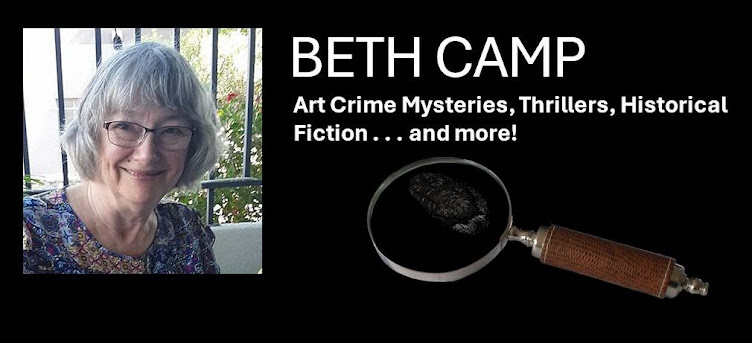 The short month of February begins as we, snowbirds, have just two weeks left here in Merida, Mexico, before we return to the land of snow. This week in Merida, the temperatures will average a high of 90F, we'll go to see flamingos again at Celestun, and, somehow I'll keep working on my new writing project.
The short month of February begins as we, snowbirds, have just two weeks left here in Merida, Mexico, before we return to the land of snow. This week in Merida, the temperatures will average a high of 90F, we'll go to see flamingos again at Celestun, and, somehow I'll keep working on my new writing project.In THE SEVENTH TAPESTRY, grad student Sandra Robertson wins a art internship at the Museum of Edinburgh in Scotland. Little does she know that her life will change as she discovers a mystery medieval tapestry, originally destined for the black market.
Romantic suspense (with a historical twist) is a new genre for me. Most of this month, I've explored ways to improve my plotting and character descriptions -- before I start writing.
Inspired by Randy Ingermanson's SNOWFLAKE, I started off with a 'concept blurb' that tells the entire story of the proposed novel in a few paragraphs. Then, with a deep breath, I shared this concept with a local writers' group here in Merida and a few trusted online writers with one question: Will readers be drawn to this story? Happily, the response was positive, with one writer commenting,"Readers love a quirky female lead." So, I'm poised between plotting, research, and drafting those character descriptions for the next several weeks.
Another challenge surfaced as I began describing the villain. I'm not sure I have enough research yet to define who the 'bad guy' is. I don't want to stereotype a person or a particular type, or even a country, and I don't know enough about the black market for art, other than it is roughly a $2 billion/year enterprise. Who would buy art from the black market? How far would that buyer be willing to go, if thwarted?
Back to the villain itself. Aren't there really two types of villains? There's the 'beast out of the closet' that terrifies the child in us. And there's the venial villain who makes a series of decisions, sometimes through choice, sometimes by compulsion, each step just a little push against whatever is within us that we call integrity.
Yes, I would like to improve my writing productivity. That is a fancy way of saying: Wouldn't it be nice if it didn't take 3 years to write one of my novels. But this new story is deliciously rich in history (contemporary mixed with 15th Century); settings (maybe a trip back to Scotland and Paris); and several new-to-me occupations (Scottish police, Interpol, Museum appraisers/acquisitions). I can also add the challenge of writing in a slightly different genre, romantic suspense.
That brings me back around to IWSG's question for this month: What do you love about the genre you write in most often? For me, writing historical fiction is the opportunity to explore perhaps a familiar place but through the lens of a different time. That focusing in on "what was life like then?" is endlessly fascinating. How did people survive and build a good life in spite of tumultuous change? What was life like for women in this time? How do social values change? How do we affirm our sense of integrity and a sense of direction through reading about the past? What makes some people strive and achieve their dreams, despite overwhelming challenges?
Who says writers don't have fun?
Check out the Internet Writer's Support Group for its monthly blog challenge (and other helpful resources). A special thank you to Alex Cavannaugh for founding the IWSG and to co-hosts for the February 7 posting of the IWSG are Stephen Tremp, Pat Garcia, Angela Wooldridge, Victoria Marie Lees, and Madeline Mora-Summonte.
 |
| Flamingo in flight, Celestun (February 2018) |

No comments:
Post a Comment